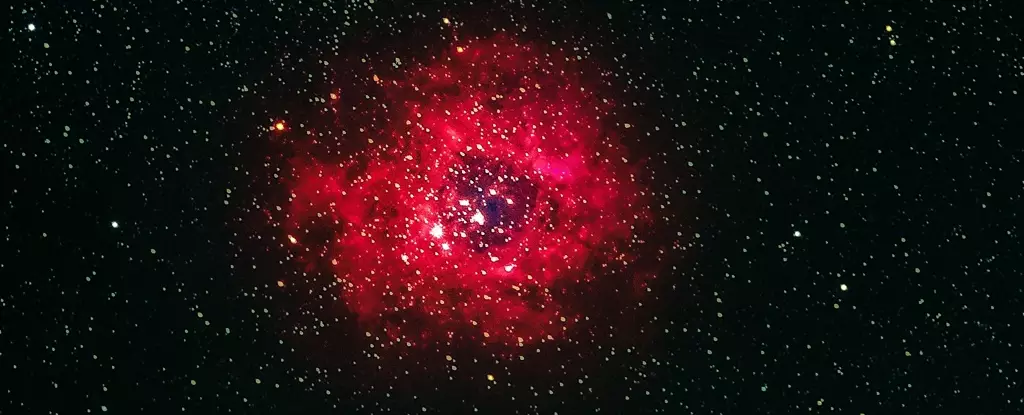Since the release of the Pentagon’s 2021 report, the interest in unidentified flying objects (UFOs) and unidentified aerial phenomena (UAP) has surged. NASA and the Pentagon have taken concrete steps in investigating these phenomena, sparking intrigue and raising questions about the potential existence of extraterrestrial life. But what if the UFO sightings are not mere random occurrences? What if they are evidence of advanced civilizations sending probes to our Solar System? In this article, we delve into the possibility of alien probes and the ongoing efforts to search for them.
With over 40 billion potentially habitable Earth-sized planets in our galaxy alone, the notion of other intelligent civilizations beyond our own becomes both plausible and mind-boggling. Humans have demonstrated their ingenuity by launching missions like Voyager and Pioneer, which have the capability to explore nearby stars. The Breakthrough Starshot program pushes the boundaries further, aiming to reach Alpha Centauri within decades. Considering our own advancements, it is not far-fetched to imagine that another civilization could send probes to our Solar System.
Critics often argue that alien probes would need to adhere to the laws of physics and engineering as we currently understand them. However, it is essential to recognize that humanity’s knowledge is constantly evolving, and our civilization is relatively young. It is not implausible to believe that a civilization hundreds of thousands of years older than ours may have uncovered more profound knowledge of physics and developed advanced engineering techniques. Therefore, dismissing the possibility of alien probes solely based on our limited understanding would be premature.
If a civilization were to evolve into artificial intelligence, it could potentially survive for millions of years. To such beings, interstellar travel may be as effortless as taking a leisurely stroll. Considering the vastness of the universe and the potential longevity of advanced AI civilizations, the sighting of UFOs, as captured in US Navy videos and government reports, may hold more significance than initially perceived. However, scientists and astronomers remain cautious, acknowledging the need for more substantial evidence to support the existence of extraterrestrial probes.
Unraveling the mystery of UFOs and identifying potential extraterrestrial probes require robust scientific investigation. Several approaches can be taken to gather evidence and data. The analysis of materials from potentially crashed UFOs can offer irrefutable proof of their origin. However, obtaining these exotic samples poses a significant challenge, as they are reportedly in the hands of private companies. Newly proposed legislation in the United States may help overcome this obstacle by mandating the surrender of all artificial materials from non-human intelligence to the government.
One approach to detect potential alien objects is by searching for short light flashes in the night sky. These flashes may occur when reflective surfaces, such as mirrors or glass, reflect sunlight. They could also result from artificial objects emitting their own internal light. Historical photographic plates have revealed the presence of transients that appear and vanish within an hour, defying astronomical explanations. Short flashes aligning with the movement of objects have been observed, resembling the characteristics of satellites. The ExoProbe project aims to search for short light flashes from potential alien objects using multiple telescopes.
The ExoProbe project takes a multi-telescope approach to verify the authenticity of light flashes. By measuring parallax, the apparent shift in the position of an object observed from different points, the project aims to determine the distance to the object. Filtering out light flashes from space debris fragments and satellites cluttering the sky is necessary to focus on potential alien objects. The addition of real-time spectra analysis enhances the ability to analyze transients before they vanish. Increasing the number of telescopes further improves accuracy in measuring parallax and determining the three-dimensional location of the object.
Although decades of radio frequency searches have yielded no conclusive evidence of extraterrestrial civilizations, recent developments have prompted the scientific community to explore new avenues. By expanding our search closer to home and investigating the possibility of alien probes, we satisfy our insatiable curiosity and honor the quest for knowledge. The goal of ongoing research is to identify potential alien objects and bring them back to Earth for further study, providing invaluable insights into the existence of extraterrestrial life.
As the interest in UFOs and UAPs continues to grow, scientists and researchers are dedicating resources and expertise to investigate the possibility of alien probes. The exploration of the vast universe and the search for extraterrestrial life are fundamental to humanity’s insatiable curiosity. While substantial evidence is still needed, the ongoing efforts to detect and understand potential extraterrestrial objects offer a glimmer of hope that we may one day find answers to the age-old question: Are we alone in the galaxy?


Leave a Reply